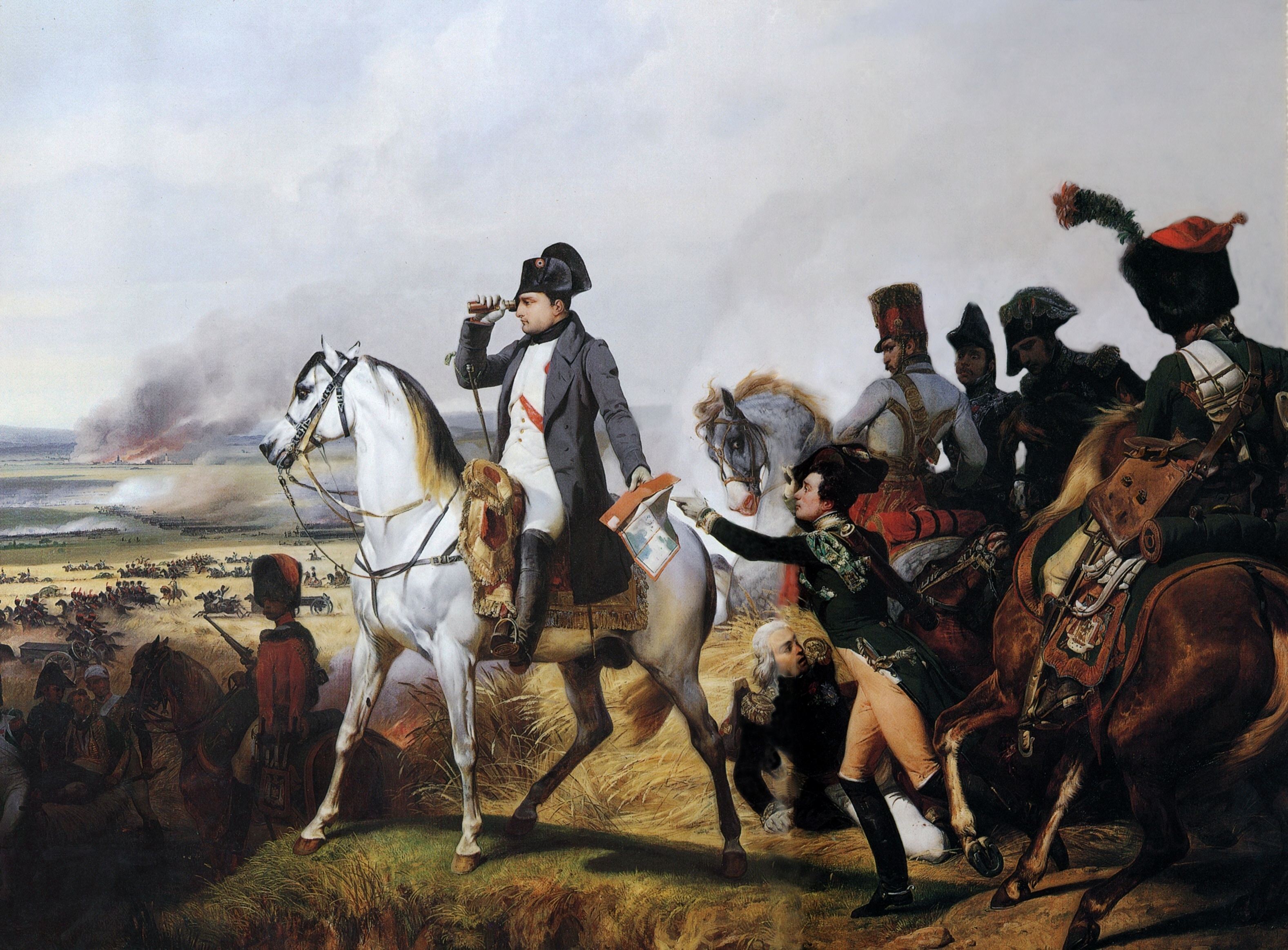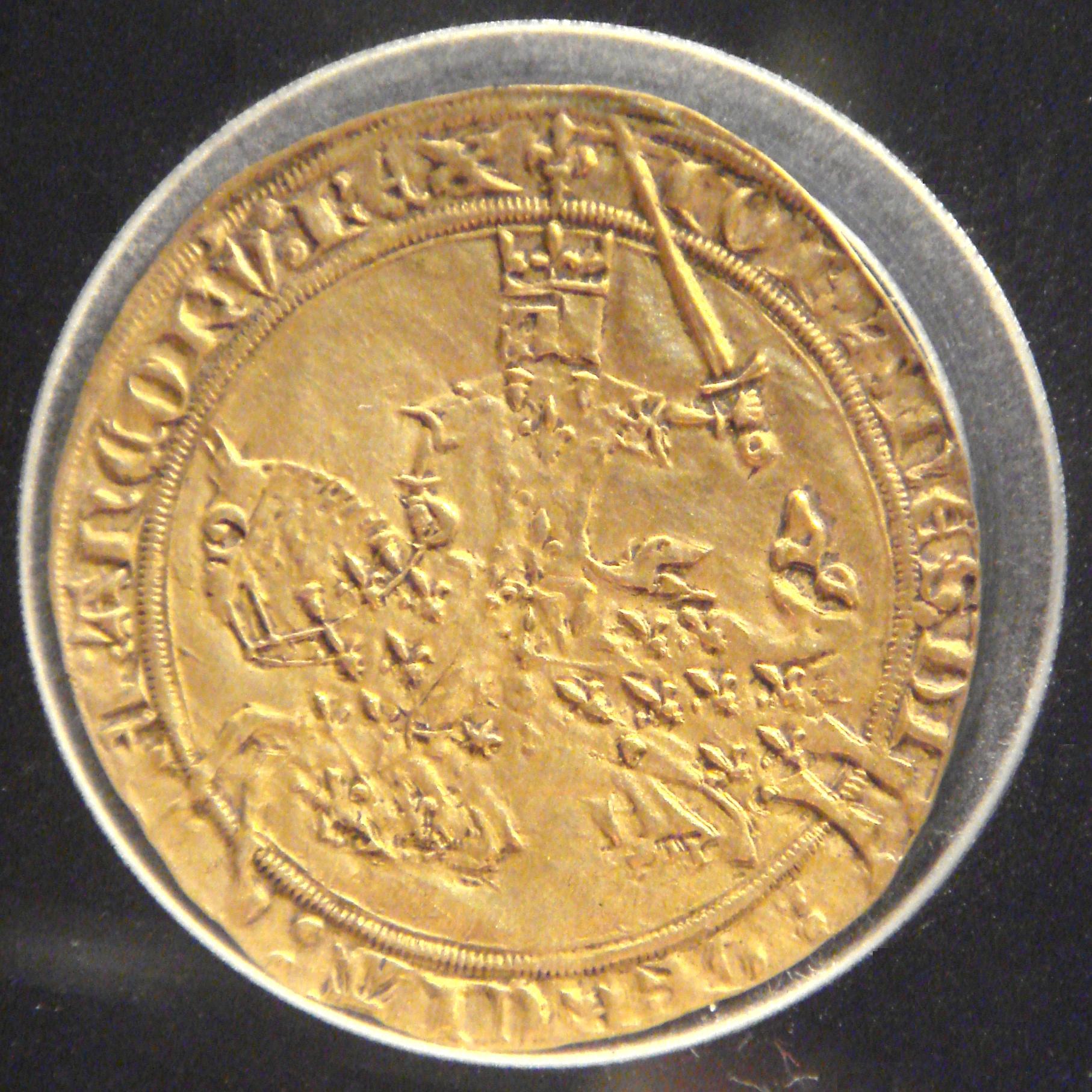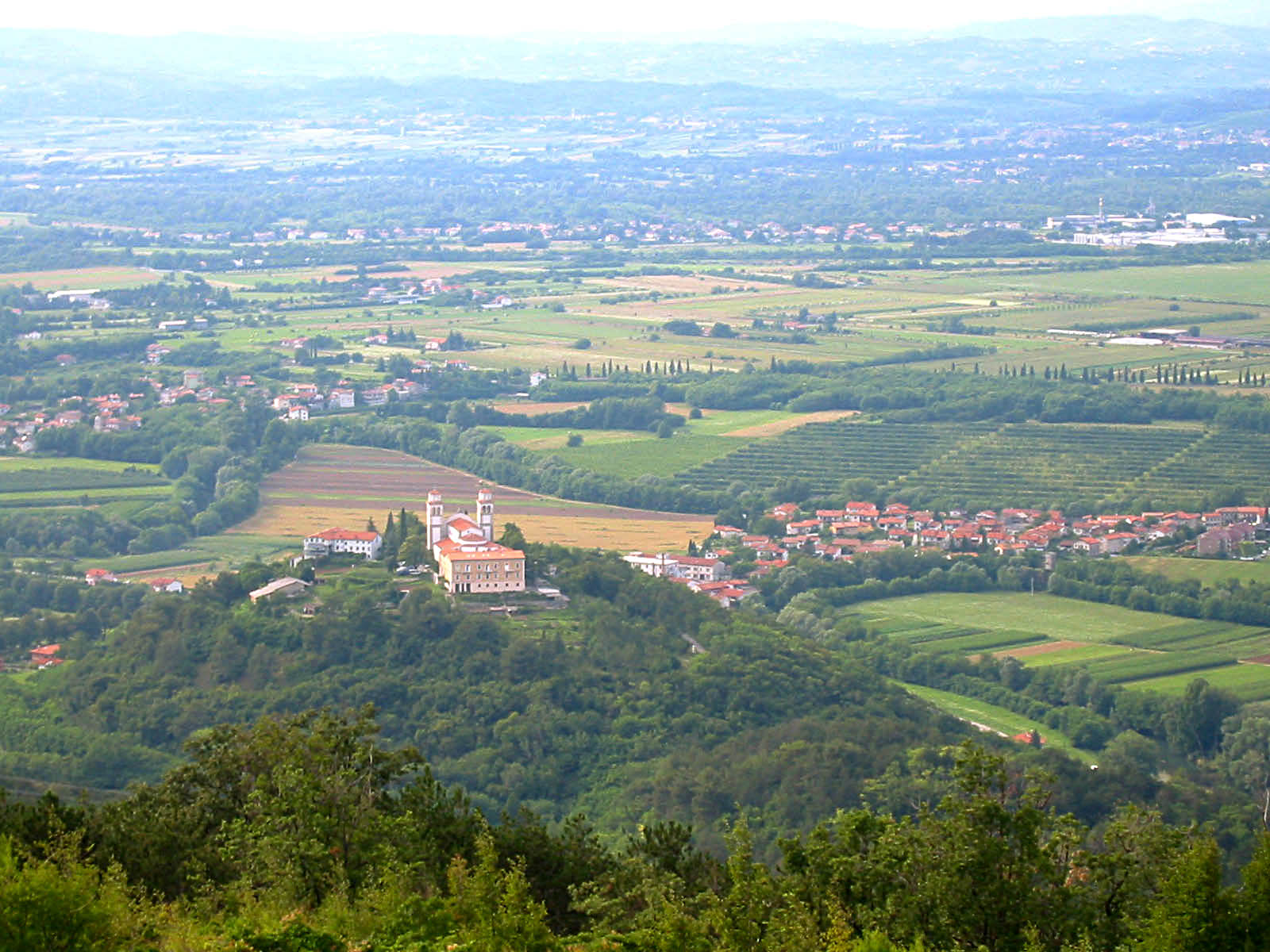|
┼Āempeter Pri Gorici
┼Āempeter pri Gorici ( or ; it, San Pietro di Gorizia) is a town and the administrative centre of the Municipality of ┼Āempeter-Vrtojba in the Slovene Littoral region of Slovenia. There is a border crossing into the Italian town of Gorizia. The crossing is known as ''San Pietro di Gorizia'' in Italian. Through most of its history, it was linked to the town of Gorizia ( sl, Gorica), which is now in Italy, whence also its name, literally meaning 'St. Peter near Gorizia'. Since 1947, it has been gravitating towards the newly established town of Nova Gorica, with which it forms a continuous conurbation. History In the Middle Ages, it was part of the Patriarchate of Aquileia and then of the County of Gorizia. In 1500, it came under Habsburg rule, and remained part of the Habsburg Monarchy until 1918, excluding a short French interim between 1809 and 1813. During the Austrian administration in the 19th and early 20th centuries, it formed an independent municipality. Accordin ... [...More Info...] [...Related Items...] OR: [Wikipedia] [Google] [Baidu] |
Gorizia
Gorizia (; sl, Gorica , colloquially 'old Gorizia' to distinguish it from Nova Gorica; fur, label=Standard Friulian, Gurize, fur, label= Southeastern Friulian, Guriza; vec, label= Bisiacco, Gorisia; german: G├Črz ; obsolete English ''Goritz'') is a town and ''comune'' in northeastern Italy, in the autonomous region of Friuli Venezia Giulia. It is located at the foot of the Julian Alps, bordering Slovenia. It was the capital of the former Province of Gorizia and is a local center of tourism, industry, and commerce. Since 1947, a twin town of Nova Gorica has developed on the other side of the modern-day ItalyŌĆōSlovenia border. The region was subject to territorial dispute between Italy and Yugoslavia after World War II: after the new boundaries were established in 1947 and the old town was left to Italy, Nova Gorica was built on the Yugoslav side. The two towns constitute a conurbation, which also includes the Slovenian municipality of ┼Āempeter-Vrtojba. Since May 2011, t ... [...More Info...] [...Related Items...] OR: [Wikipedia] [Google] [Baidu] |
Illyrian Provinces
The Illyrian Provinces sl, Ilirske province hr, Ilirske provincije sr, ąśą╗ąĖčĆčüą║ąĄ ą┐čĆąŠą▓ąĖąĮčåąĖčśąĄ it, Province illirichegerman: Illyrische Provinzen, group=note were an autonomous province of France during the First French Empire that existed under Napoleonic Rule from 1809 to 1814. The province encompassed modern-day Slovenia, Gorizia, Trieste, and parts of Croatia, Austria, and Montenegro. Its capital was Ljubljana (german: Laybach, Laibach) in Slovenia. It encompassed six ''d├®partements'', making it a relatively large portion of territorial France at the time. Parts of Croatia were split up into Civil Croatia and Military Croatia, the former served as a residential space for French immigrants and Croatian inhabitants and the latter as a military base to check the Ottoman Empire. In 1809, Napoleon Bonaparte invaded the region with his Grande Arm├®e after key wins during the War of the Fifth Coalition forced the Austrian Empire to cede parts of its territory. Integra ... [...More Info...] [...Related Items...] OR: [Wikipedia] [Google] [Baidu] |
Franc Derganc General Hospital Of Nova Gorica
The franc is any of various units of currency. One franc is typically divided into 100 centimes. The name is said to derive from the Latin inscription ''francorum rex'' (King of the Franks) used on early French coins and until the 18th century, or from the French ''franc'', meaning "frank" (and "free" in certain contexts, such as ''coup franc'', "free kick"). The countries that use francs today include Switzerland, Liechtenstein, and most of Francophone Africa. The Swiss franc is a major world currency today due to the prominence of Swiss financial institutions. Before the introduction of the euro in 1999, francs were also used in France, Belgium and Luxembourg, while Andorra and Monaco accepted the French franc as legal tender (Mon├®gasque franc). The franc was also used within the French Empire's colonies, including Algeria and Cambodia. The franc is sometimes Italianised or Hispanicised as the ''franco'', for instance in Luccan franco. Origins The franc was original ... [...More Info...] [...Related Items...] OR: [Wikipedia] [Google] [Baidu] |
ND Gorica
Nogometno dru┼Ītvo Gorica, commonly referred to as ND Gorica or simply Gorica, is a Slovenian football club based in the town of Nova Gorica. They are one of the most successful Slovenian clubs with four Slovenian PrvaLiga and three Slovenian Cup titles. The club plays its matches at the Nova Gorica Sports Park stadium with the capacity of 3,100 seats. As of the 2022ŌĆō23 season, Gorica competes in the Slovenian PrvaLiga, the top tier of Slovenian football. History Yugoslav period (1947ŌĆō1991) The history of Slovenian association football in the Gori┼Īka region goes back to 1907, when the first football club Jugoslavija was formed by the Slovenes of Gorizia. October 1947 marks the beginning of the club with the foundation of FD Gorica in ┼Āempeter pri Gorici, where it operated until 1963. They started in the second-level but quickly promoted to the Slovenian Republic League in 1950 under the new name ┼Įelezni─Źar Nova Gorica. Five years later they became republic champi ... [...More Info...] [...Related Items...] OR: [Wikipedia] [Google] [Baidu] |
Nova Gorica Grammar School
, streetaddress = Delpinova 9 , city = Nova Gorica , country = SVN , coordinates = , head of school = Andrej ┼Āu┼Īmelj , established = , type = Public gymnasium school , staff = , students = , age range = 15-19 , classes = , website Gimnazija Nova Gorica Nova Gorica Grammar School ( sl, Gimnazija Nova Gorica) is a coeducational nondenominational public gymnasium school located in Nova Gorica, Slovenia. The school caters for students aged between 15 and 19 and is roughly equivalent to preparatory schools in Anglo-American contexts. The school is considered among the best secondary schools in Slovenia. History It was established after the annexation of the Slovenian Littoral to the Yugoslavia in September 1947. It was initially located in the nearby town of ┼Āempeter pr ... [...More Info...] [...Related Items...] OR: [Wikipedia] [Google] [Baidu] |
Yugoslavia
Yugoslavia (; sh-Latn-Cyrl, separator=" / ", Jugoslavija, ąłčāą│ąŠčüą╗ą░ą▓ąĖčśą░ ; sl, Jugoslavija ; mk, ąłčāą│ąŠčüą╗ą░ą▓ąĖčśą░ ;; rup, Iugoslavia; hu, Jugoszl├Īvia; rue, label= Pannonian Rusyn, ą«ą│ąŠčüą╗ą░ą▓ąĖčÅ, translit=Juhoslavija; sk, Juhosl├Īvia; ro, Iugoslavia; cs, Jugosl├Īvie; it, Iugoslavia; tr, Yugoslavya; bg, ą«ą│ąŠčüą╗ą░ą▓ąĖčÅ, Yugoslaviya ) was a country in Southeast Europe and Central Europe for most of the 20th century. It came into existence after World War I in 1918 under the name of the '' Kingdom of Serbs, Croats and Slovenes'' by the merger of the provisional State of Slovenes, Croats and Serbs (which was formed from territories of the former Austria-Hungary) with the Kingdom of Serbia, and constituted the first union of the South Slavic people as a sovereign state, following centuries in which the region had been part of the Ottoman Empire and Austria-Hungary. Peter I of Serbia was its first sovereign. The kingdom gained international ... [...More Info...] [...Related Items...] OR: [Wikipedia] [Google] [Baidu] |
Yugoslav Partisan
The Yugoslav Partisans,Serbo-Croatian, Macedonian language, Macedonian, Slovene language, Slovene: , or the National Liberation Army, sh-Latn-Cyrl, Narodnooslobodila─Źka vojska (NOV), ąØą░čĆąŠą┤ąĮąŠąŠčüą╗ąŠą▒ąŠą┤ąĖą╗ą░čćą║ą░ ą▓ąŠčśčüą║ą░ (ąØą×ąÆ); mk, ąØą░čĆąŠą┤ąĮąŠąŠčüą╗ąŠą▒ąŠą┤ąĖč鹥ą╗ąĮą░ ą▓ąŠčśčüą║ą░ (ąØą×ąÆ); sl, Narodnoosvobodilna vojska (NOV) officially the National Liberation Army and Partisan Detachments of Yugoslavia, sh-Latn-Cyrl, Narodnooslobodila─Źka vojska i partizanski odredi Jugoslavije (NOV i POJ), ąØą░čĆąŠą┤ąĮąŠąŠčüą╗ąŠą▒ąŠą┤ąĖą╗ą░čćą║ą░ ą▓ąŠčśčüą║ą░ ąĖ ą┐ą░čĆčéąĖąĘą░ąĮčüą║ąĖ ąŠą┤čĆąĄą┤ąĖ ąłčāą│ąŠčüą╗ą░ą▓ąĖčśąĄ (ąØą×ąÆ ąĖ ą¤ą×ął); mk, ąØą░čĆąŠą┤ąĮąŠąŠčüą╗ąŠą▒ąŠą┤ąĖč鹥ą╗ąĮą░ ą▓ąŠčśčüą║ą░ ąĖ ą┐ą░čĆčéąĖąĘą░ąĮčüą║ąĖ ąŠą┤čĆąĄą┤ąĖ ąĮą░ ąłčāą│ąŠčüą╗ą░ą▓ąĖčśą░ (ąØą×ąÆ ąĖ ą¤ą×ął); sl, Narodnoosvobodilna vojska in partizanski odredi Jugoslavije (NOV in POJ) was the Communist Party of Yugoslavia, communist-led Anti-fascism, anti-fascist resistance to the Axis powers ( ... [...More Info...] [...Related Items...] OR: [Wikipedia] [Google] [Baidu] |
World War II
World War II or the Second World War, often abbreviated as WWII or WW2, was a world war that lasted from 1939 to 1945. It involved the World War II by country, vast majority of the world's countriesŌĆöincluding all of the great powersŌĆöforming two opposing military alliances: the Allies of World War II, Allies and the Axis powers. World War II was a total war that directly involved more than 100 million Military personnel, personnel from more than 30 countries. The major participants in the war threw their entire economic, industrial, and scientific capabilities behind the war effort, blurring the distinction between civilian and military resources. Air warfare of World War II, Aircraft played a major role in the conflict, enabling the strategic bombing of population centres and deploying the Atomic bombings of Hiroshima and Nagasaki, only two nuclear weapons ever used in war. World War II was by far the List of wars by death toll, deadliest conflict in hu ... [...More Info...] [...Related Items...] OR: [Wikipedia] [Google] [Baidu] |
Max Fabiani
Maximilian Fabiani, commonly known as Max Fabiani ( it, Massimo, sl, Maks) (29 April 1865 – 12 August 1962) was a cosmopolitan trilingual architect and town planner of mixed Italian-Austrian ancestry, born in the village of Kobdilj near ┼Ātanjel on the Karst Plateau, County of Gorizia and Gradisca, in present-day Slovenia. Together with Ciril Metod Koch and Ivan Vanca┼Ī, he introduced the Vienna Secession style of architecture (a type of Art Nouveau) in Slovenia.Andrej Hrausky, Janez Ko┼Šelj: ''Maks Fabiani: Dunaj, Ljubljana, Trst.'' Mladina, 12 August 2010 Life Fabiani was born to Antonio Fabiani, a[...More Info...] [...Related Items...] OR: [Wikipedia] [Google] [Baidu] |
Austro-Hungarian Army
The Austro-Hungarian Army (, literally "Ground Forces of the Austro-Hungarians"; , literally "Imperial and Royal Army") was the ground force of the Austro-Hungarian Dual Monarchy from 1867 to 1918. It was composed of three parts: the joint army (, " Common Army", recruited from all parts of the country), the Imperial Austrian Landwehr (recruited from Cisleithania), and the Royal Hungarian Honv├®d (recruited from Transleithania). In the wake of fighting between the Austrian Empire and the Hungarian Kingdom and the two decades of uneasy co-existence following, Hungarian soldiers served either in mixed units or were stationed away from Hungarian areas. With the Austro-Hungarian Compromise of 1867 the new tripartite army was brought into being. It existed until the disestablishment of the Austro-Hungarian Empire following World War I in 1918. The joint "Imperial and Royal Army" ( or ''k.u.k.'') units were generally poorly trained and had very limited access to new equipmen ... [...More Info...] [...Related Items...] OR: [Wikipedia] [Google] [Baidu] |
Italian Royal Army
The Royal Italian Army ( it, Regio Esercito, , Royal Army) was the land force of the Kingdom of Italy, established with the proclamation of the Kingdom of Italy. During the 19th century Italy started to unify into one country, and in 1861 Manfredo Fanti signed a decree creating the Army of the Two Sicilies. This newly created army's first task was to defend against the repressive power in southern Italy. The Army of the Two Sicilies combated against criminals and other armies during this time of unification. After the monarchy ended in 1946, the army changed its name to become the modern Italian Army (). Within the Italian Royal Army are the elite mountain military corporals called, the Alpini. The Alpini are the oldest active mountain infantry in the world. Their original mission was to protect and secure Italy's northern mountain border that aligns with France and Austria. This group emerged in World War I when a three-year campaign was fought against the Austro-Hun ... [...More Info...] [...Related Items...] OR: [Wikipedia] [Google] [Baidu] |
Battles Of The Isonzo
The Battles of the Isonzo (known as the Isonzo Front by historians, sl, so┼Īka fronta) were a series of 12 battles between the Austro-Hungarian and Italian armies in World War I mostly on the territory of present-day Slovenia, and the remainder in Italy along the Isonzo River on the eastern sector of the Italian Front between June 1915 and November 1917. Italian military plans In April 1915, in the secret Treaty of London, Italy was promised by the Allies some of the territories of Austro-Hungarian Empire which were mainly inhabited by ethnic Slovenes and Austrian Germans. Italian commander Luigi Cadorna, a staunch proponent of the frontal assault who claimed the Western Front proved the ineffectiveness of machine guns, initially planned breaking onto the Slovenian plateau, taking Ljubljana and threatening Vienna. The area between the northernmost part of the Adriatic Sea and the sources of the Isonzo River thus became the scene of twelve successive battles. As a result, t ... [...More Info...] [...Related Items...] OR: [Wikipedia] [Google] [Baidu] |





